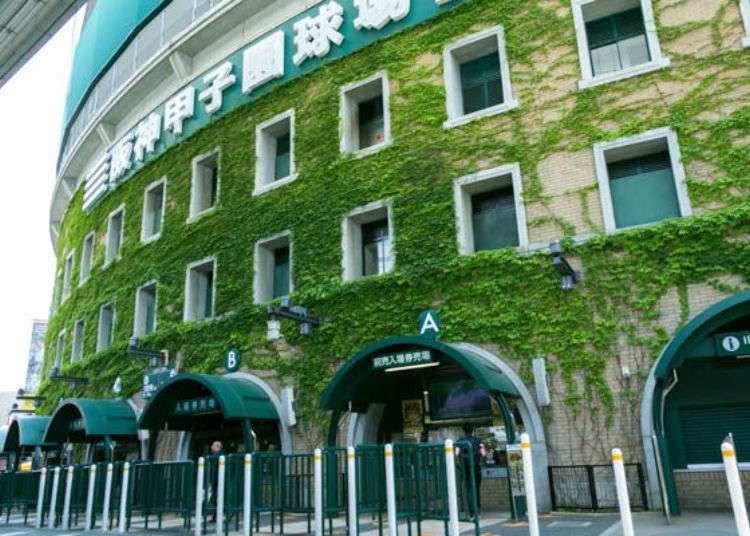
Hanshin Koshien Stadium is considered the holy land of baseball in Japan. Built in 1924, Koshien Stadium is Japan's oldest baseball stadium, and the home field of the Hanshin Tigers, one of Japan’s premier pro baseball teams. It is also the stage for the wildly popular Japanese High School Baseball Championship.
Join us for an inside look as we take a tour of this iconic sports landmark!
- Table of Contents
-
- Behind Koshien Stadium's name
- Getting to Koshien Stadium
- Feeling the power of Japanese baseball: Taking Koshien Stadium’s tour
- The Koshien Stadium tour begins with a trip to the third-base bullpen and interview space
- On to the long-awaited third base benches which normally only the players can enter!
- Feel like a high school player and touch Koshien Stadium soil
- For those who love Japanese high school baseball, the Alps Stands are of interest
- Hanshin Koshien Stadium Museum: A treasure house of Koshien memorabilia!
- A composite of Hanshin Tigers history!
- Here are more things to see in the museum!
Behind Koshien Stadium's name
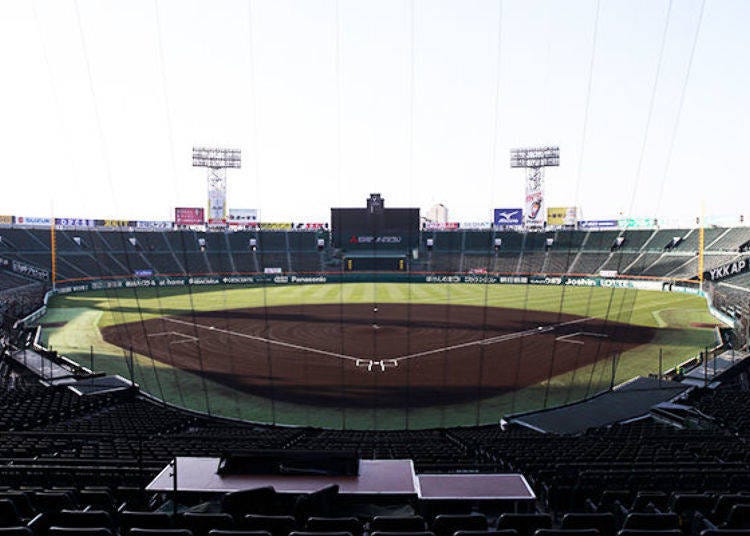
Koshien Stadium was completed in 1924. It was built in about four months to be used for Japan's 10th National High School Baseball Championship.
It was the first large-scale ballpark made in Japan, its design based on the New York Giants football team’s home grounds. 1924 was the year of the Wood Rat according to the Japanese zodiac, and the two characters for it are the same as “Koshi” used in Koshien, which literally could be translated as the “park of the Wood Rat.”
Accordingly, the ground was originally named the Koshien Grand Sports Ground. Every year, except for the war years of WWII, it has been the site of the twice-annual national high school baseball championships.
Getting to Koshien Stadium
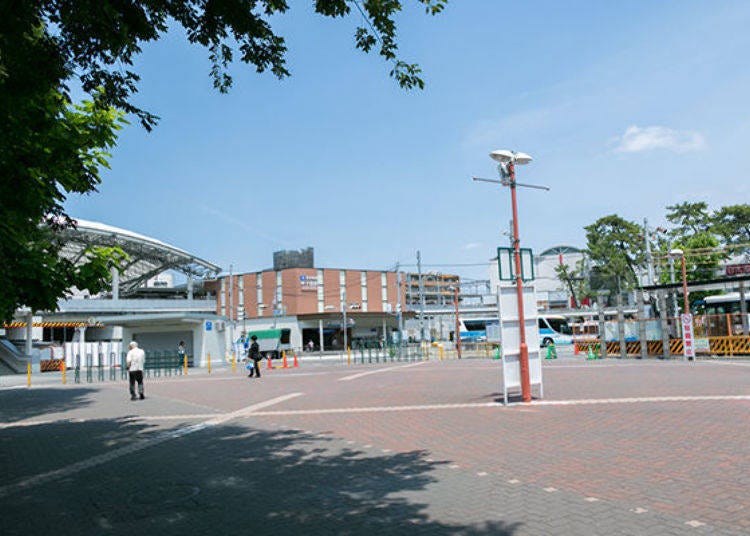
Koshien Stadium is a 4-minute walk away from Koshien Station on the Hanshin Line. Koshien Station is about a 21-minute train ride away from Osaka-Umeda Station, a trip that costs 270 yen.

Feeling the power of Japanese baseball: Taking Koshien Stadium’s tour
Koshien Stadium has a Stadium Tour that takes you behind the scenes and shows you aspects of the ground that you normally would not be able to see during a baseball game.
As of July 2017, a total of 16 types of tours have been offered. The dates of the tours are scheduled outside game times. You need to make a reservation two months in advance at the beginning of the month by 5:30 p.m. either on the website or by telephone (note, though, that reservations are no longer accepted once the number of participants allowed on tour has been reached).
I took the S2 tour course that covers, among other areas, the bench along the third base line and grounds (1,500 yen for adults, 1,000 yen for children. Tax included; tour lasts about 50 minutes).
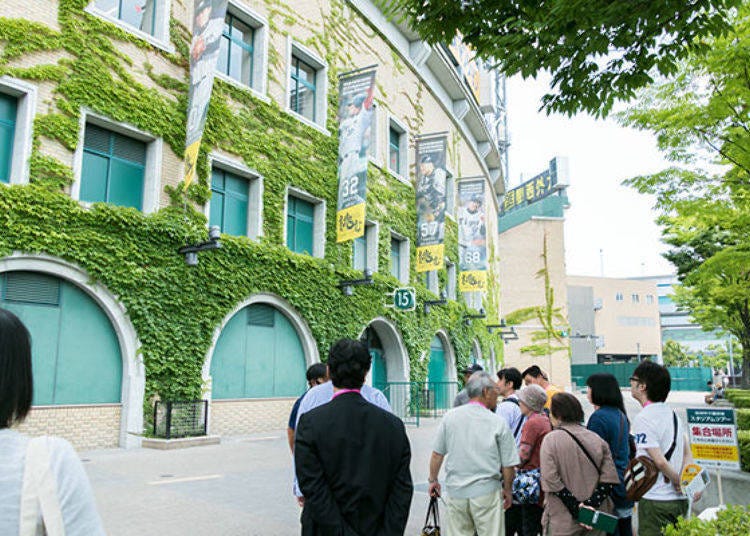
On the day of the tour, you first must go to the Hanshin Koshien Stadium Museum next to the No. 16 Gate to pay for the tour, upon which you will receive an original ticket holder; then you head over to the meeting place.
The tour guide will first brief participants on good places for taking pictures and other things they must be mindful of during the tour. Now it’s time for the tour to begin! We entered the ballpark from the nearby No. 14 Gate.
The Koshien Stadium tour begins with a trip to the third-base bullpen and interview space
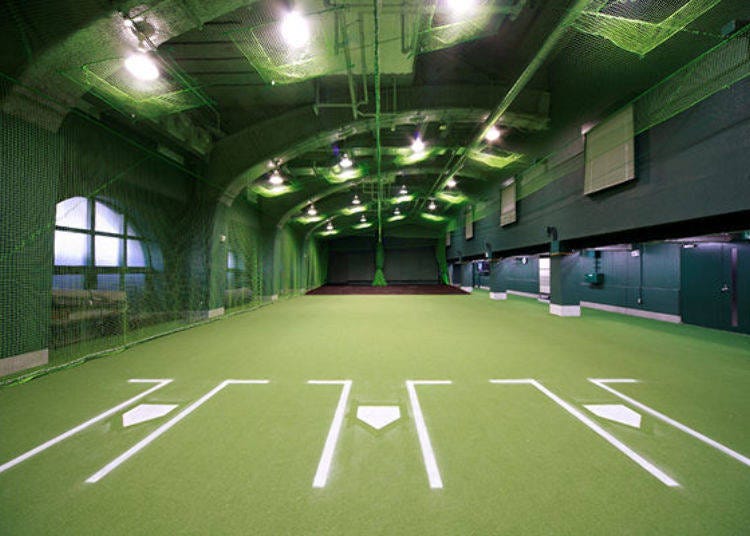
On days when there are night games, the S2 course is held three times during the day. First, we will go to the second-floor passageway near the third base, “Alps Stand.”
When there is a game, shops along the passageway are busy with fans buying bento boxes, curry, and yakitori, but when there is no game, the shutters of the shops are down. One of the shutters is opened for the tour. And through it, we can see the third base bullpen. There is a thrill of excitement in seeing this.
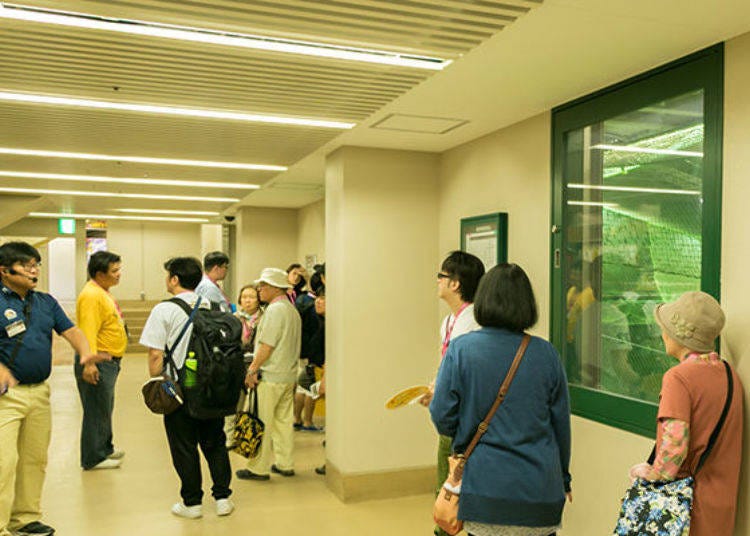

This space is used by high school baseball teams for warming up before their game during the annual high school tournaments. Here the guide showed us a photograph of Japan’s first public heated swimming pool.
That’s right. When Koshien was still called the Koshien Grand Sports Ground, the bullpen by the third base was a heated pool which was quite epoch-making at that time. And the bullpen by first base was used as a judo and kendo hall.
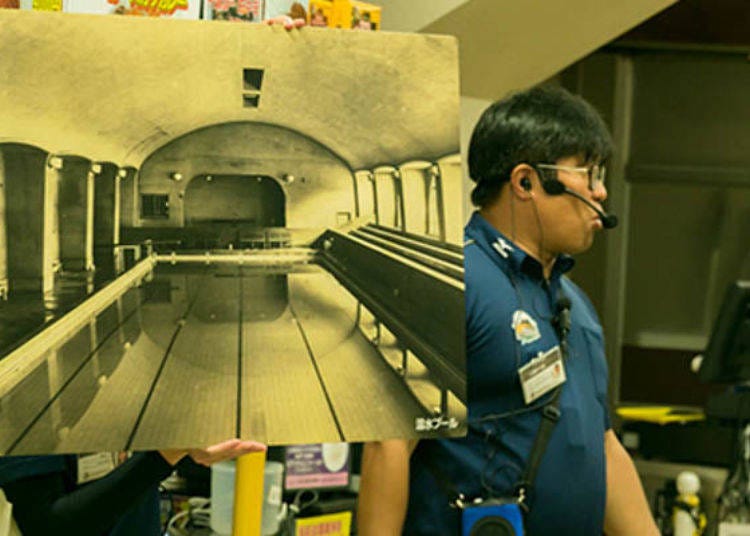
Continuing on, before and after games, the players are interviewed, and a special area for conducting those interviews has been made on the first floor.
On this day, a Hanshin Tigers backdrop was shown, but when a high school game ends, this is where the coach and athletes are interviewed.
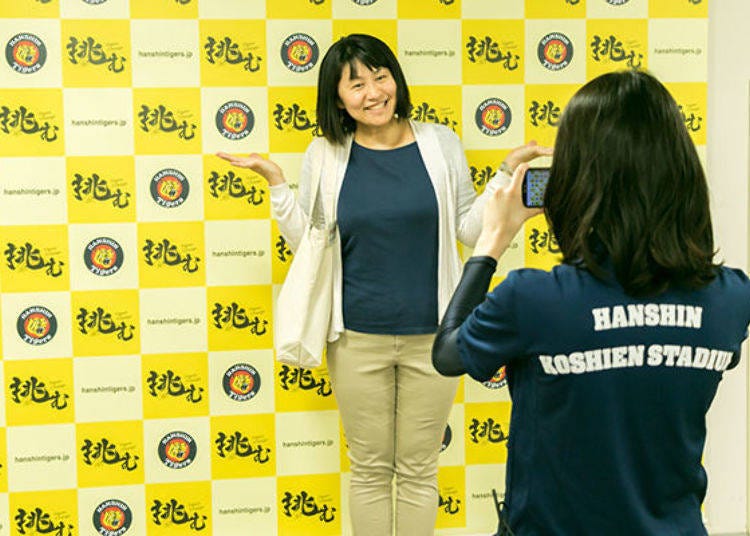
On to the long-awaited third base benches which normally only the players can enter!

Players get to the third base benches from their locker room. It seems that there are times when it is also possible to watch players warming up on the field on days when there are games.
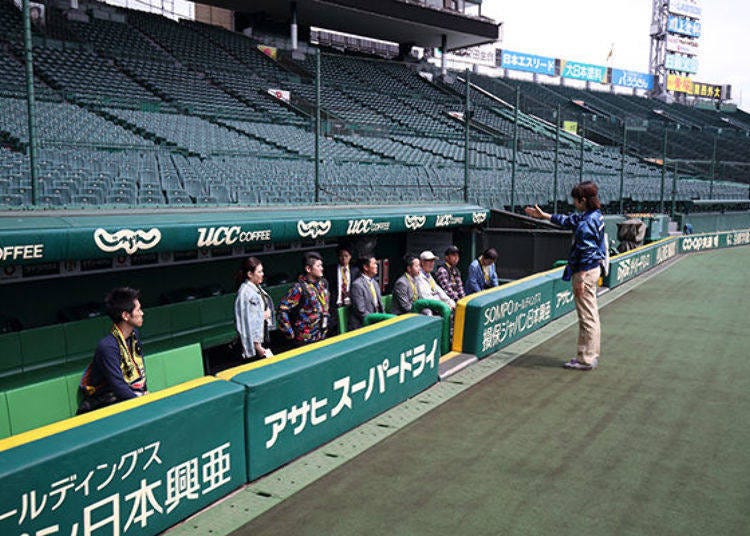
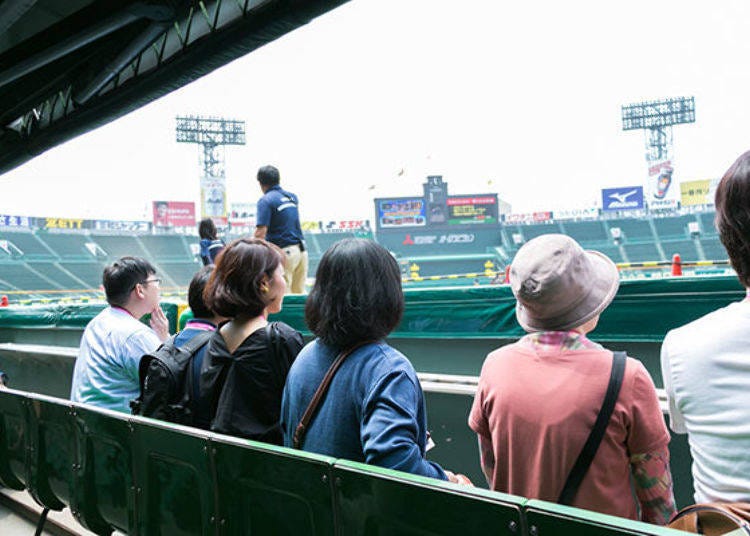
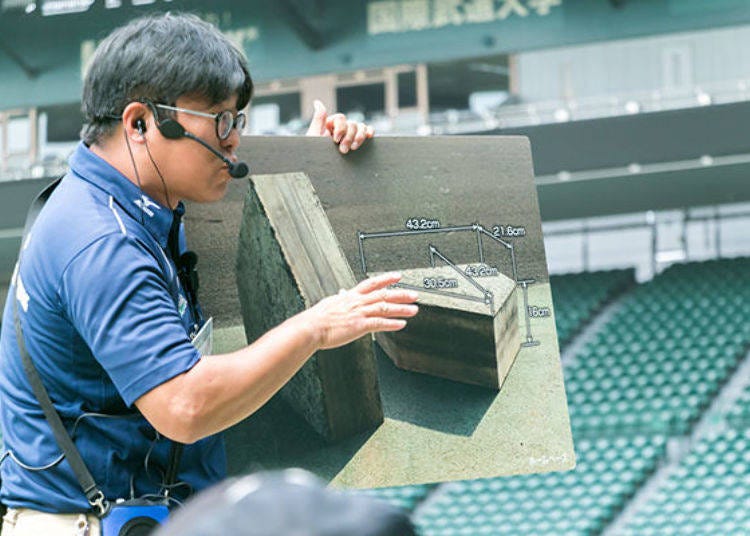
Feel like a high school player and touch Koshien Stadium soil
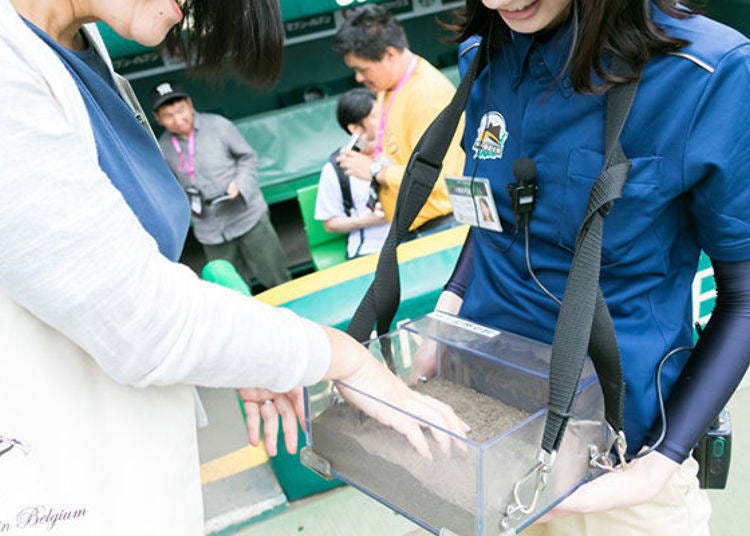
One scene that always stands out during the high school championships is that of the losing team members gathering up soil from the ground as a souvenir as they cried.
While you can’t touch the actual field grounds on the stadium tour, instead, Koshien soil is shown in a case that you can touch.
During the tour, we could see the grounds being maintained. The staff from the company that maintains and manages the Koshien Stadium grounds do this every day regardless of whether there is a game.
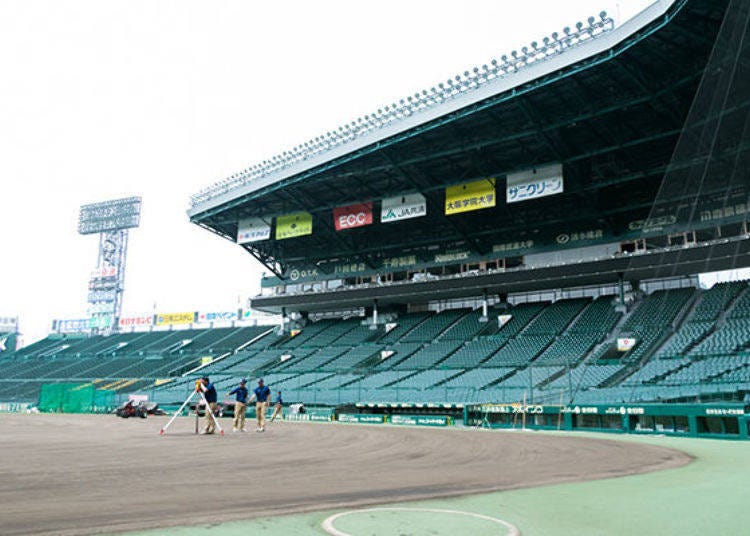
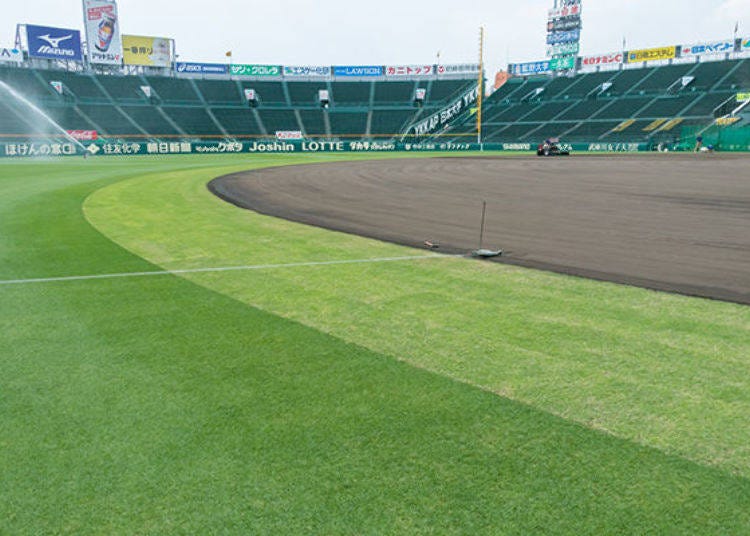
This was something I learned on the tour. You can really feel how big Koshien is by looking up at the stands.
For those who love Japanese high school baseball, the Alps Stands are of interest
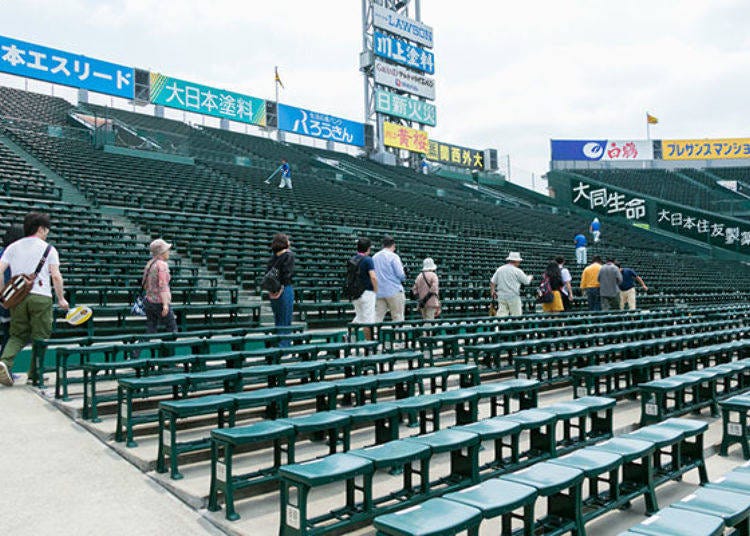
Leaving the third base bench, we moved along to the Alps Stands which are located between the infield and outfield stands. This is where the supporters of high school teams sit during high school tournaments.
When high school baseball tournaments are held, there are many types of plans implemented, such as doubling the height of the infield fence so that school banners can be displayed and removing the front row of seats to secure aisle space to enable all the spectators to change places between games.

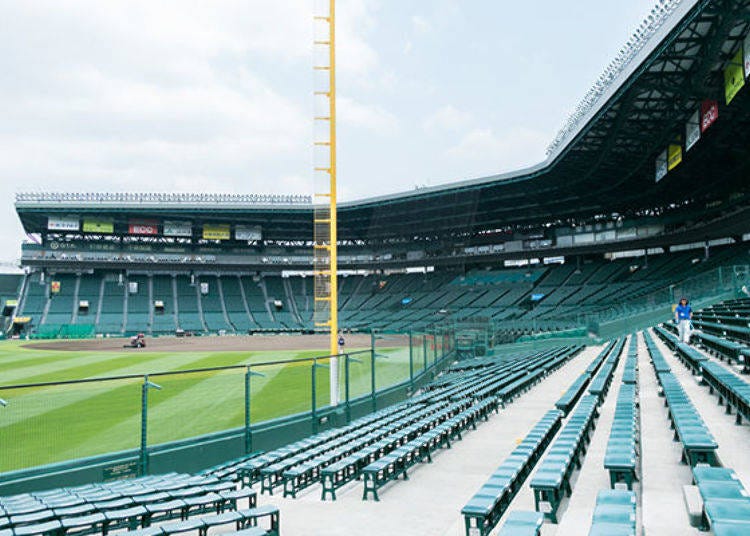
Passing through the outfield stands and exiting through the No. 16 Gate from where the tour started, we come to the end of the tour, which lasted about 50 minutes.
This was a happy time for me as I was able to feel a closer connection to the Koshien Stadium by being able to go behind the scenes. There are still more things I would like to learn about the stadium, so I am looking forward to taking one of the other tour courses offered.
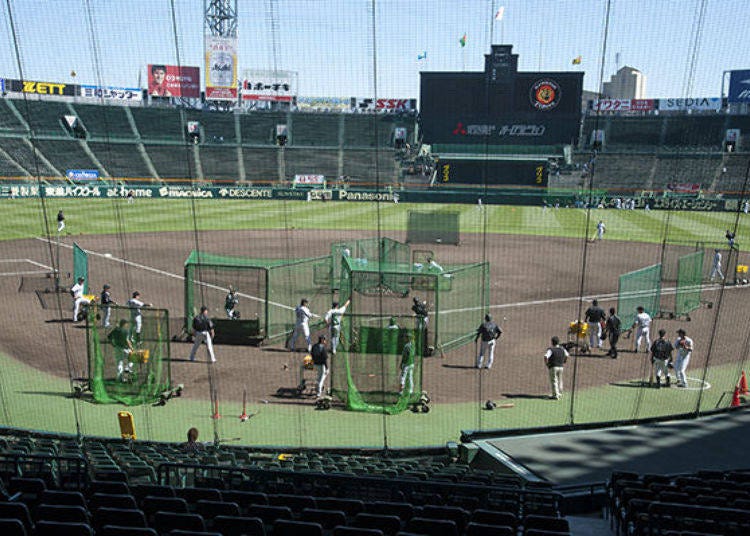
-
Hanshin Koshien Stadium Tour (S2 Course)阪神甲子園球場スタジアムツアー(S2コース)
- Address 1-82 Koshien-cho, Nishinomiya City, Hyogo Prefecture
- Phone Number 0798-44-3310
・Fee: Adults 1,500 yen, Children 1,000 yen (Group Adult 1,200 yen, Group Children 800 yen) *All prices include tax
* Children fees are for 4-year-olds to junior high age
* Fee includes admission price for Hanshin Koshien Stadium Museum
・Tour Duration: about 50 minutes
・Reservation Method: 5:30 p.m. On the day before the first day of the month two months in advance. Reservations can be made on the website or by telephone at 0798-44-3310 (10:00 a.m. ~ 5:30 p.m., only on Hanshin Koshien Stadium Museum business days)
* Once the set number of participants has been reached, reservations are closed
Hanshin Koshien Stadium Museum: A treasure house of Koshien memorabilia!
The admission fee to the Hanshin Koshien Stadium Museum (adults 600 yen, children aged 4 to junior high school 300 yen; tax included) is included in the stadium tour. A history of the Hanshin Tigers and high school baseball is displayed here. While the tour experience is still fresh in your mind, visit the Hanshin Koshien Stadium Museum!
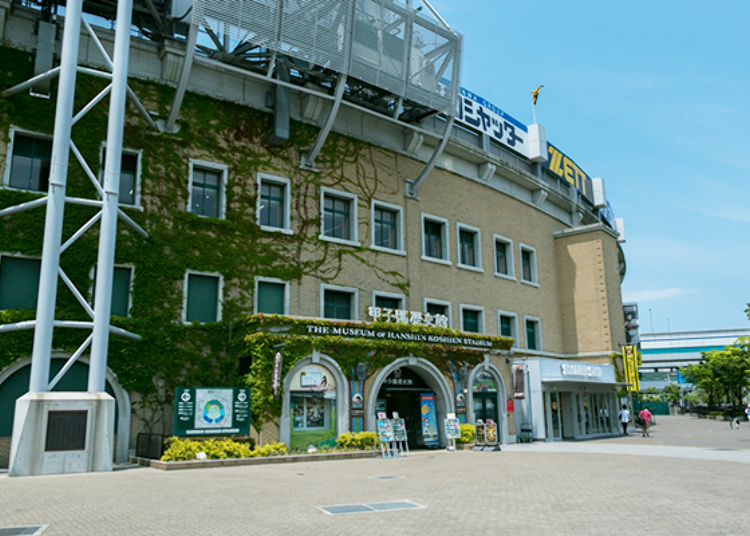
The museum is divided into two zones: the High School Baseball Zone and the Hanshin Tigers Zone. Each is rich with historical memorabilia and video clips. We begin by going up the red-carpeted staircase right after entering.
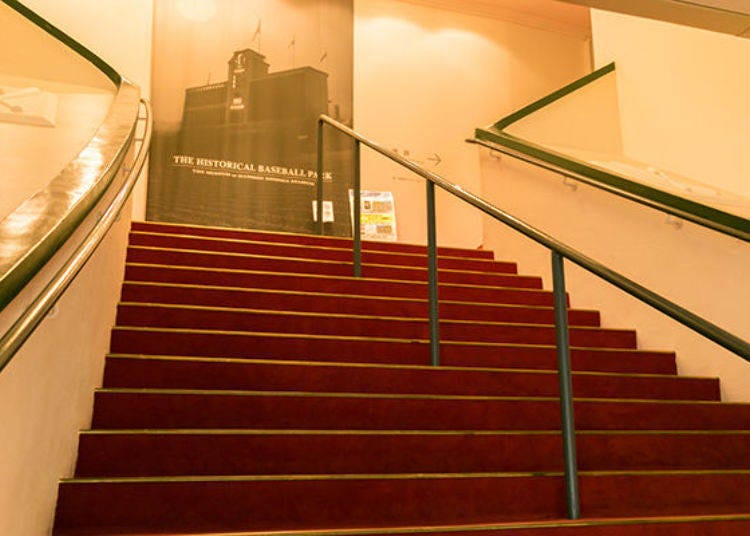
To the right, at the top of the stairs, the tour begins with the High School Baseball Zone. Here there is a collection of the players, memorable games, video clips of games, and uniforms from high school baseball.
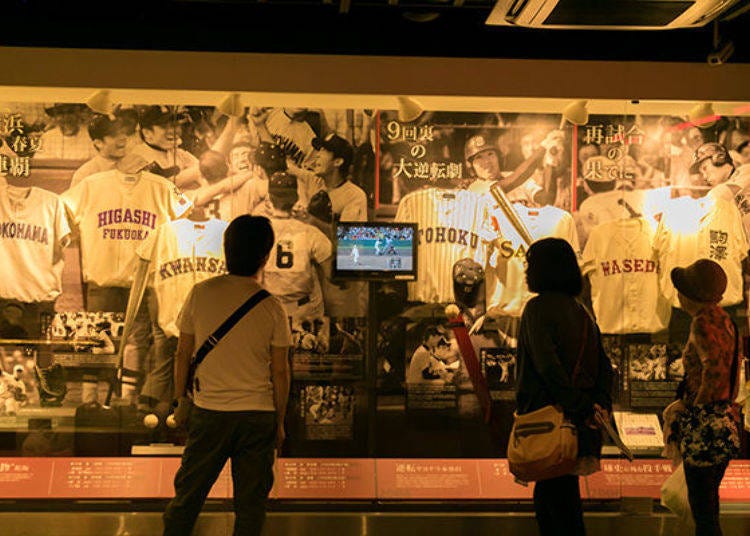
Here also is the original pennant from the National High School Baseball Championship of Japan (Summer Koshien).
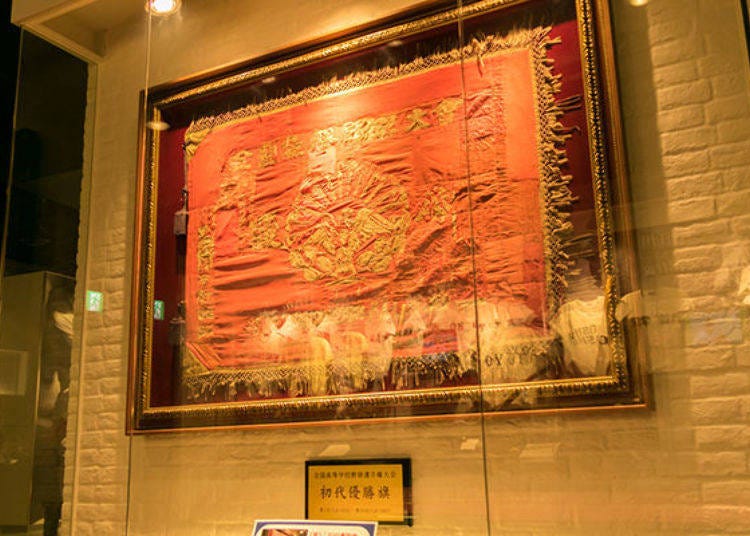
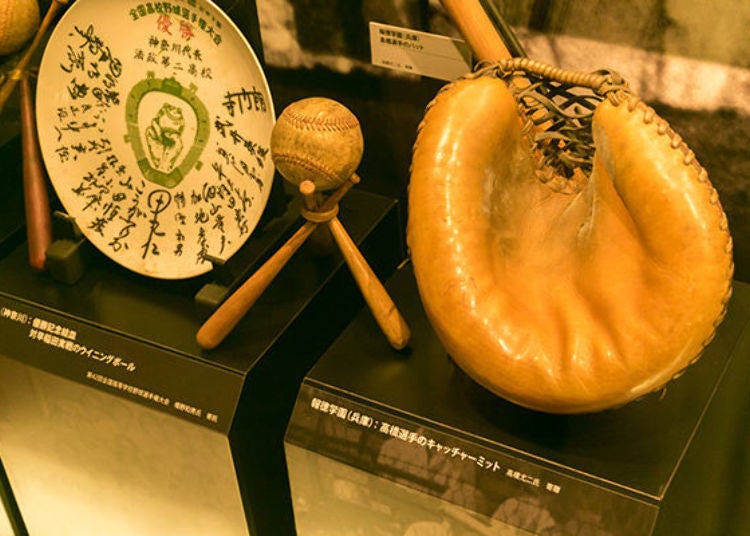

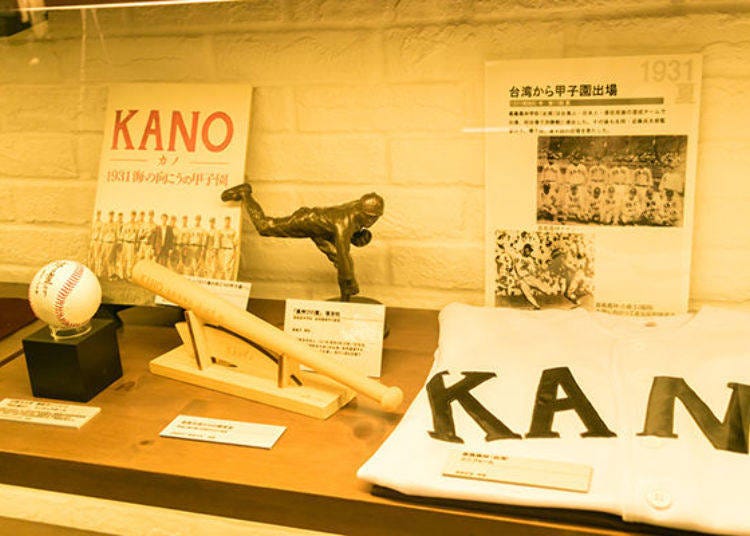

A composite of Hanshin Tigers history!
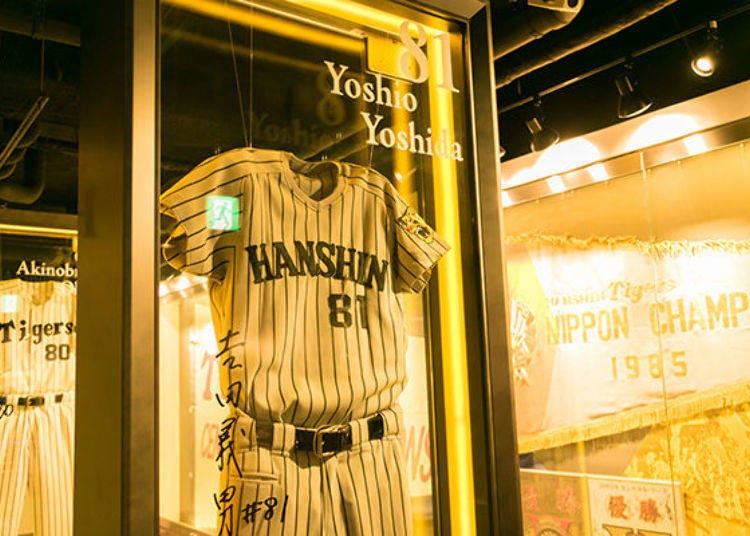
Next is the Hanshin Tigers Zone, where there are many exhibitions certain to delight old Tigers fans: displays of uniforms of famous players, their bats, and other items.
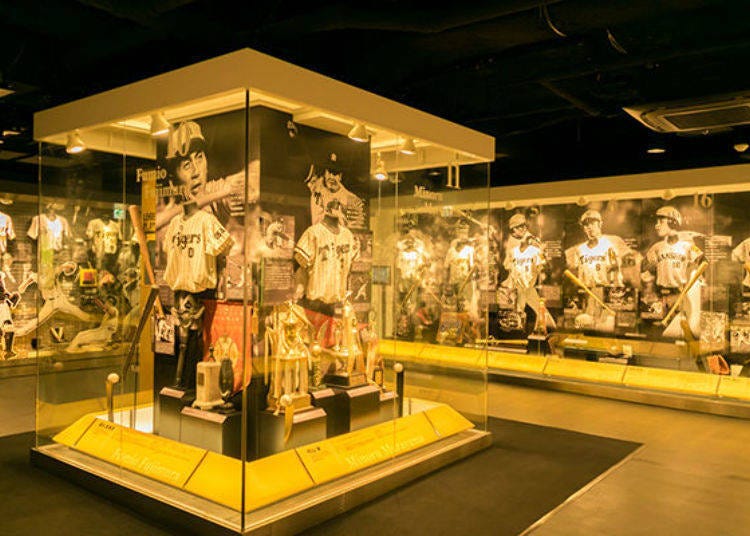

Of course there is an area dedicated to the current Hanshin Tigers, too.
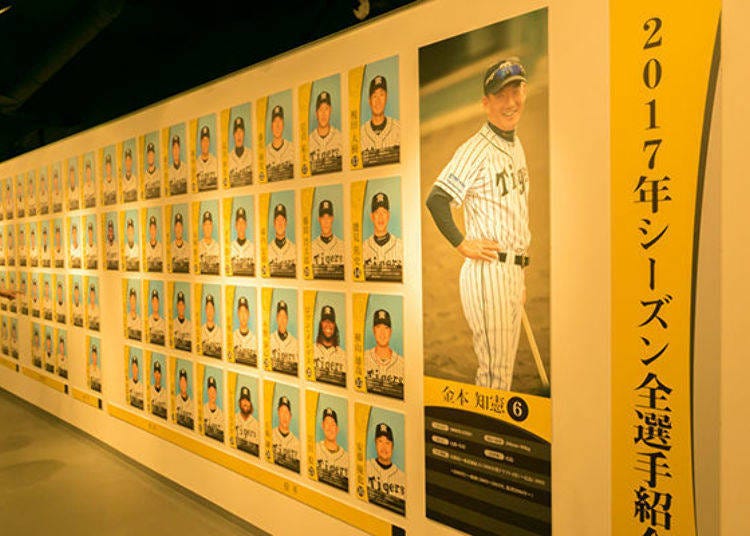
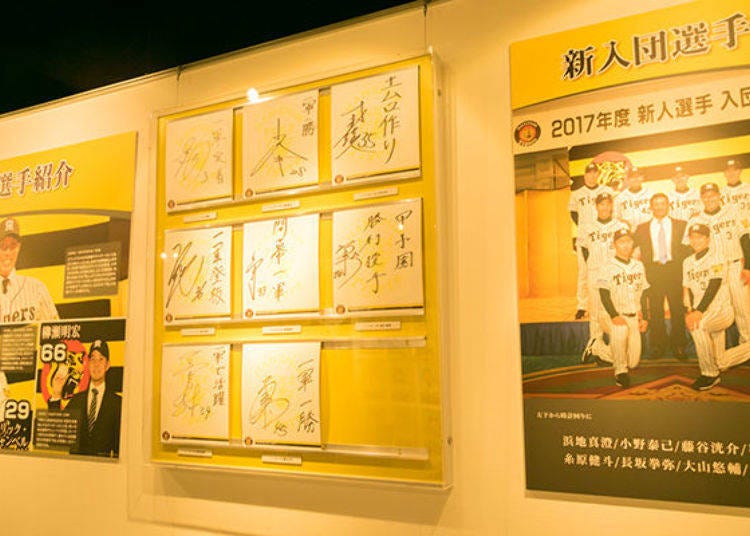
The displays in both the High School Baseball Zone and the Hanshin Tigers Zone pack all the major highlights of both into these compact displays.
Here are more things to see in the museum!
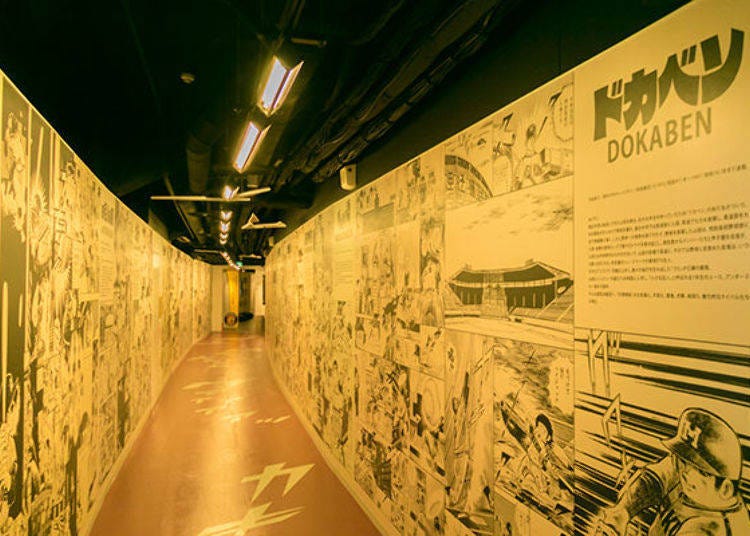
There are many other displays other than those about high school baseball and the Hanshin Tigers as well. The Manga and Koshien area have memorable scenes taken from a manga with Koshien baseball themes, such as Dokaben and Touch, as well as illustrations signed by the artists.
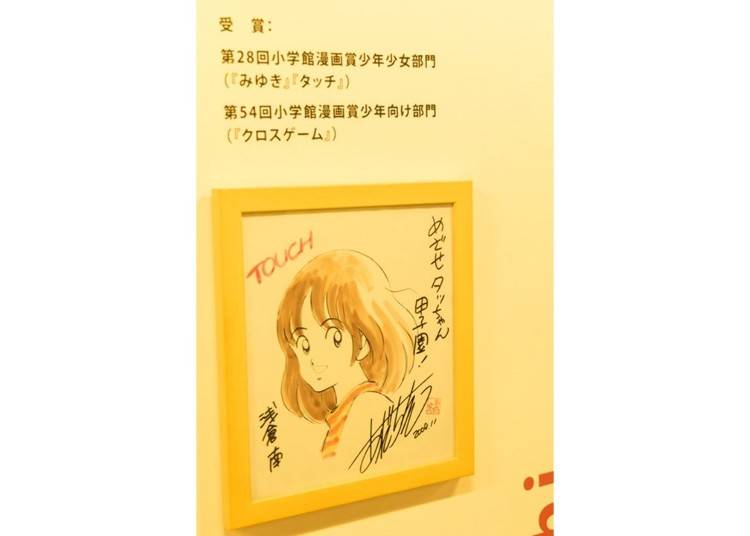
“Back Screen View” shows to maximum effect the Koshien Stadium. It takes you from outside the museum, along the outdoor stairway, to beneath the scoreboard. When the weather is nice, you can go outside for an all-encompassing view of the stadium.
During games and when the weather is bad, it is impossible to go out, so you should confirm whether it is possible to do so when you enter the museum.
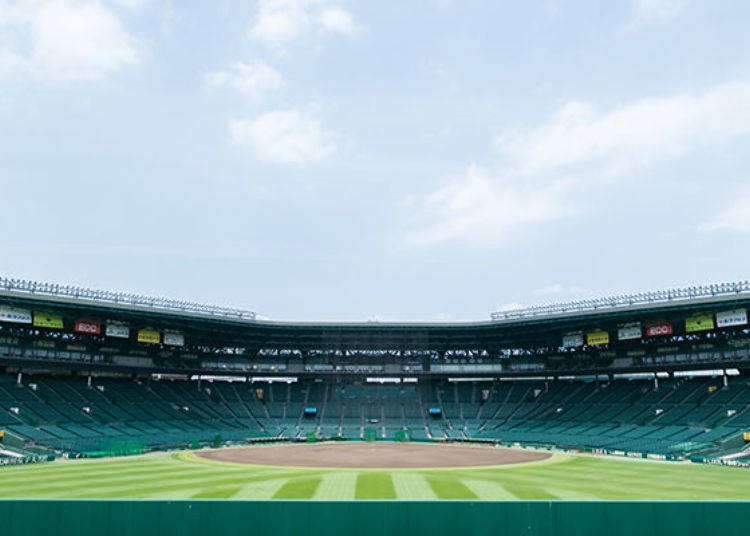
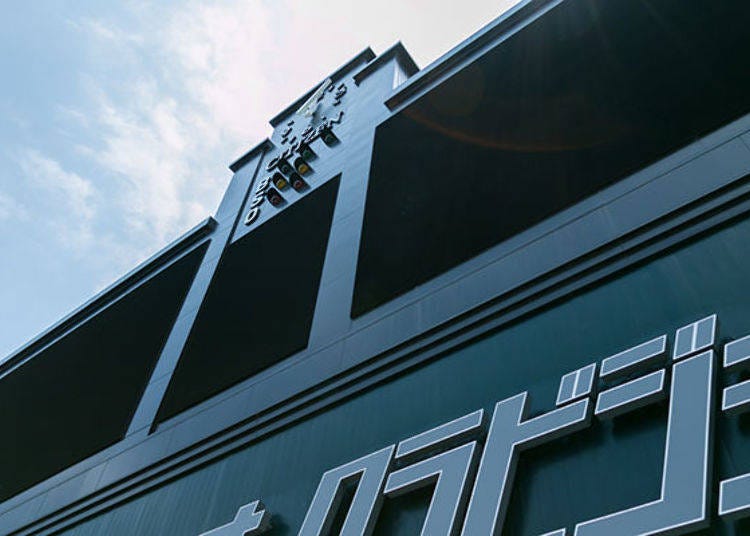
There are lots of fun attractions in the Hanshin Koshien Stadium Museum. To begin with, there is trick art. Here you can photograph yourself hitting a home run off a pro pitcher! There is a Pro Baseball Version and a High School Version, and with each season, these are changed.
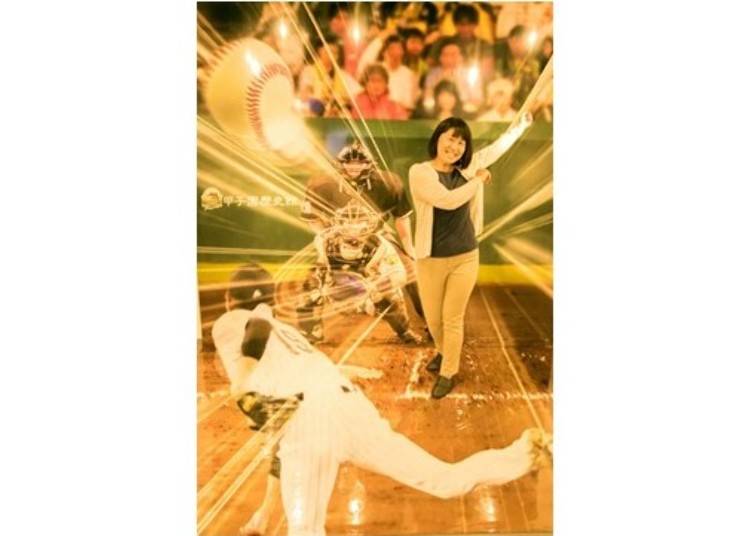
There is also a virtual reality corner where you can see yourself as one of the girl high school students marching into the stadium carrying the name of a high school or soar above the stadium like a bird looking down on it.

This is a corner where you can experience the baseball draft. Pro baseball drafts are often shown on TV. Here you can have your name drawn just like the names of designated players. You can choose the team and your position, be selected by your favorite team and strike a pose.
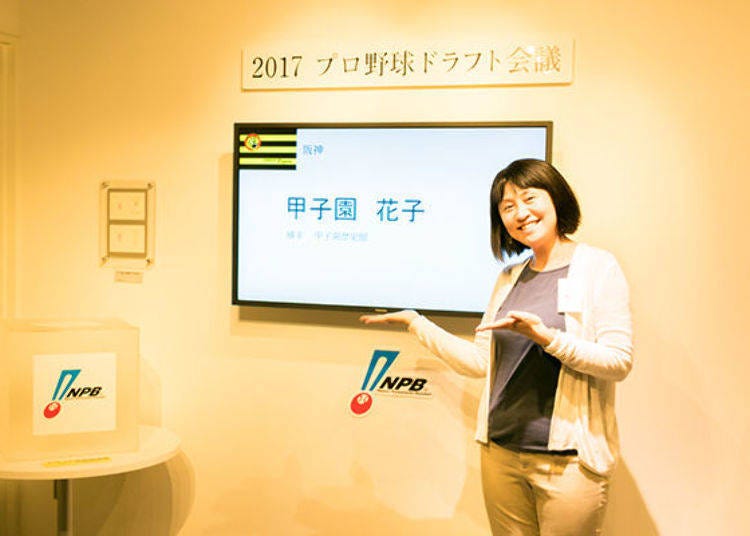
-
Hanshin Koshien Stadium Museum甲子園歴史館
- Address 1-82 Koshien-cho, Nishinomiya City, Hyogo Prefecture
- Phone Number 0798-49-4509
Hours: 10:00 a.m. ~ 6:00 p.m. (November ~ February 10:00 a.m. ~ 5:00 p.m.) ※ Business hours fluctuate depending on events being held
* Admission closes 30 minutes before closing time
Admission fee: Adults 600 yen, children 300 yen (tax included in both)
* Children are between the ages of 4 and junior high school age
Closed: Mondays, (game days, excluding holidays), end of year holidays
* Other times, such as when building is undergoing maintenance
Koshien Stadium, the Mecca of Japanese baseball, is a place all pro and high school baseball fans will want to visit. From the stadium tour and the Koshien park historic center, I gained a deeper appreciation of the attractions of the stadium and the historical and memorable events associated with it.
-

-
Address
1-82, Koushiencho, Nishinomiya-shi, Hyogo, 662-0974
View Map -
Nearest Station
Koshien Station (Hanshin Line)
3 minutes on foot
- Phone Number 0798-47-1041
-
Address
1-82, Koushiencho, Nishinomiya-shi, Hyogo, 662-0974
Text by:kurashisa
- Area
- Category
*Prices and options mentioned are subject to change.
*Unless stated otherwise, all prices include tax.
Popular Tours & Activitiess
Recommended places for you
-

Jukuseiniku-to Namamottsuarera Nikubaru Italian Nikutaria Sannomiya
Izakaya
Kobe, Sannomiya, Kitano
-

ISHIDAYA Hanare
Yakiniku
Kobe, Sannomiya, Kitano
-

Kambei Sannomiyahonten
Yakiniku
Kobe, Sannomiya, Kitano
-

Kanzenkoshitsuyakinikutabehodai Gyugyu Paradise Sannomiya
Yakiniku
Kobe, Sannomiya, Kitano
-
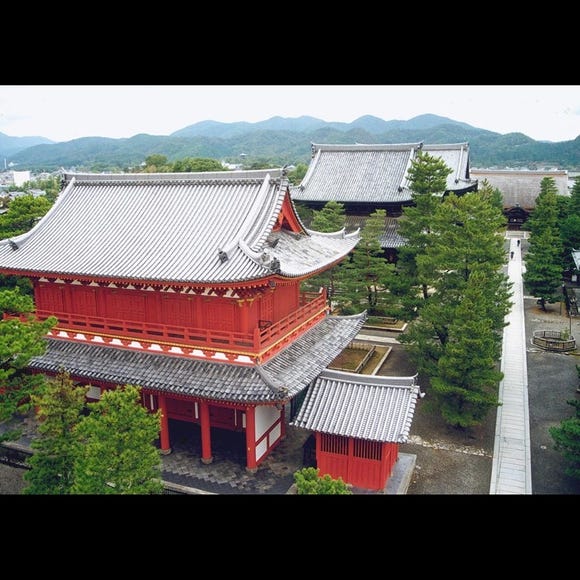
Myoshin-ji Temple
Temples
Arashiyama, Uzumasa
-
Goods

Yoshida Gennojo-Roho Kyoto Buddhist Altars
Gift Shops
Nijo Castle, Kyoto Imperial Palace
-
Ad

Discover Timeless Beauty: Kimono-en, a Web Magazine Exploring the Spirit of Kimono
-

Celebrate a Dreamy Barbapapa Christmas at JR Osaka Station's Twilight
by: Guest Contributor
-

November Events in Kansai: Fun Festivals, Food, and Things to Do in Kyoto & Osaka
-

Best Things to Do and See Around Kyoto & Osaka in September: Events and Festivals in Kansai
-

Everything You Need to Know About teamLab Biovortex Kyoto (2025 Insider Guide)
by: Wemmy Chau
-
Ad

Recharge and Relax with a Healing Getaway at Kamenoi Hotel Toba
Inspiration for Accommodations
-

Spacious Family Hotel in Namba: 20 Comfortable Stays for Family Fun
-

Charming Hotels to Enjoy the Spectacular Views of Arashiyama's Autumn Leaves from Your Room
-

Experience Stunning Views of Osaka Castle from Private Spaces: Top Hotels Near Osaka Castle
-

Recommended by Visitors! Arashiyama's Best-Rated Hotels
-

Family-Friendly Universal Studios Japan Hotel with Excellent Access
-

Enjoy a Comfortable Stay in Osaka! 10 Hotels with Convenient Airport Shuttle Services
-

Top 10 Recommended Hotels Near Namba Station with Great Access
-

Enjoy Night Views from Your Room! Recommended Hotels in Namba Area
-

Osaka Koreatown: In Search of the Best Eats in the Korean Roots of Osaka's Tsuruhashi Market
-

5 Must-Visit Nara Temples and Shrines: Discover the Timeless Beauty of Japan's Ancient Capital
by: WESTPLAN
-

5 Best Hotels Near Universal Studios Japan (Osaka): Top-Rated Places to Stay
by: WESTPLAN
-

Complete Guide to Buying Japanese Medicine in Japan: Phrases and Vocabulary You Need to Know
-

Ippudo Osaka and More: These 5 Ramen Restaurants in Osaka Are Going Viral
by: WESTPLAN
-

Popular Food at Universal Studios Japan
by: WESTPLAN
- #best gourmet Osaka
- #things to do Osaka
- #what to do in kyoto
- #what to bring to japan
- #best gourmet Kyoto
- #new years in Osaka
- #what to buy in nanba
- #Visiting Osaka
- #onsen tattoo friendly arima
- #daiso
- #Visiting Kyoto
- #best japanese soft drinks
- #japanese fashion culture
- #japanese convenience store snacks
- #japanese nail trends













